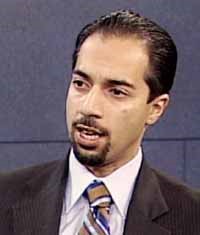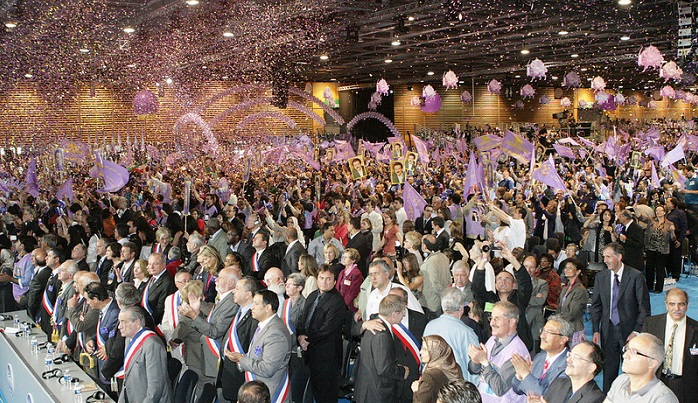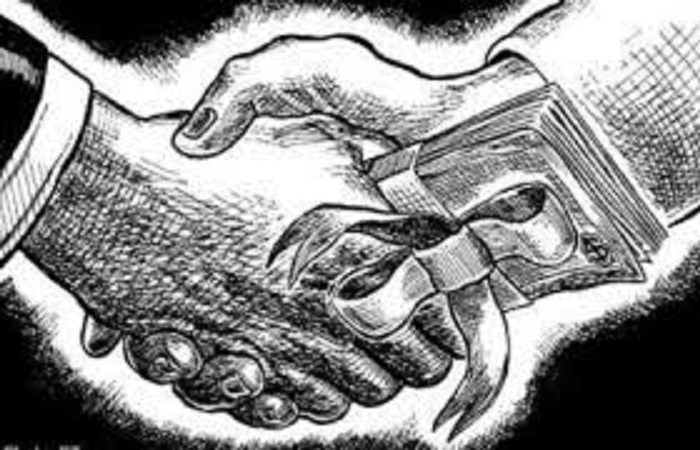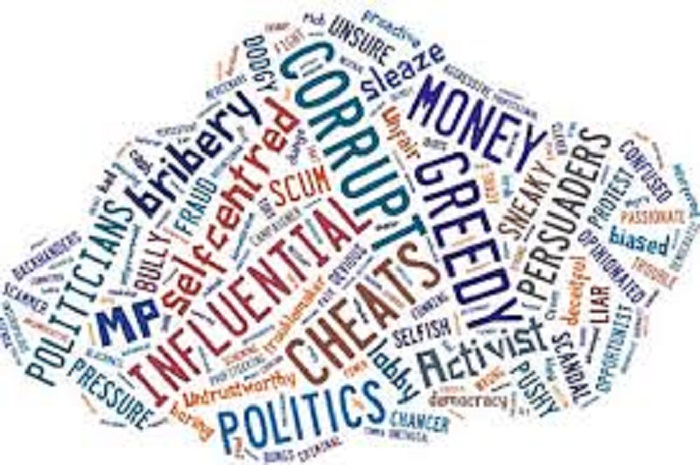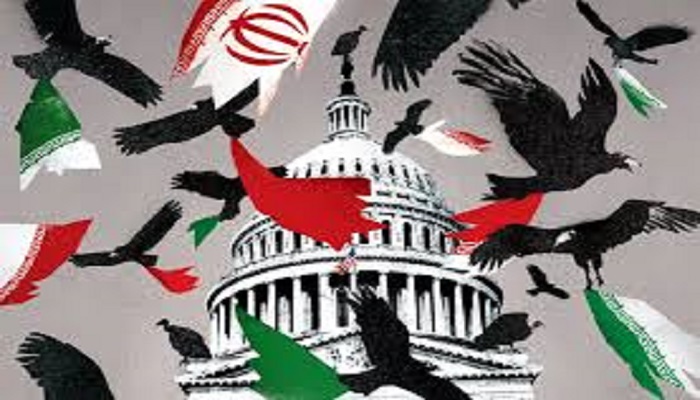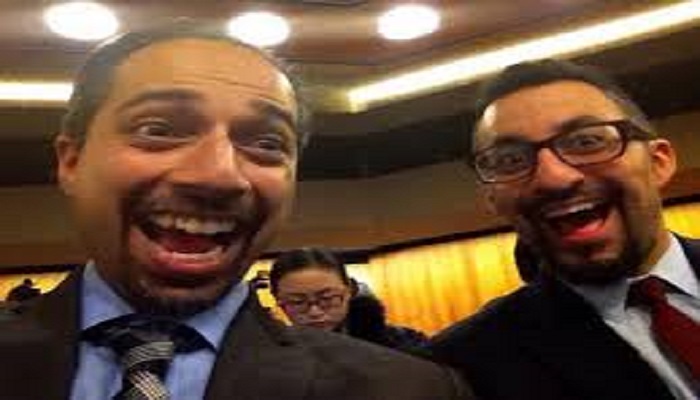
Trita Parsi has had close working relationship with Javad Zarif, when he was Iran’s Ambassador to the United Nations. In a deposition, Parsi stated he only communicated in 2006 with Zarif in order to “interview him.” But this is not true.
Emails made public demonstrate that Parsi and Zarif collaborated on numerous political issues. Parsi publicly distributed an Iranian regime document to influence US policy. He made arrangements for the ambassador to participate in a conference on Capitol Hill and to meet members of Congress, and sought the ambassador’s council regarding the feasibility of a new Persian Gulf security arrangement.
About the collusion between Parsi and Zarif, a former Associate Deputy Director of the FBI said Parsi should have been registered as a foreign agent of Iran. Arizona Senator Jon Kyl contacted the US Justice Department, urging an investigation of Parsi.
It is not known when and how Parsi first met Javad Zarif, Iran’s Ambassador to the United Nations (2002-2007) in New York City. Zarif currently is Iran’s Foreign Minister.
Their association dates back at least to 2003, according to a report NIAC sent to the National Endowment for Democracy (NED). In the document, NIAC stated it had a relationship with Zarif “due to personal contacts between Dr. Zarif and NIAC’s Acting President, Trita Parsi.”[1]
Emails and dates of meetings between Parsi and Zarif were made public during the defamation lawsuit filed by Parsi and NIAC against Daioleslam Seif Hassan. In the discovery process, Parsi was required to hand over all of his calendar entries. For 2006, there was a five-month gap in which there are no entries.
In the available emails, both Parsi and Zarif used private email addresses to communicate. Zarif’s address was [email protected]. The domain name, 141.com, was registered in 1996 at eName Technology, located in Xiamen, China. The company conceals registration information, which likely accounts for its many links to illicit domain names.
Parsi communicated with Zarif from his university email account ([email protected]) and later his personal address ([email protected]) rather than his NIAC address ([email protected]). Parsi also used a private email account when communicating with Siamak Namazi.
The emails and meeting dates made public are from 2006 and 2007. While obvious gaps exist in the communications, it’s possible to gain an understanding of Parsi’s relationship with Zarif and their collaboration on political issues.
Parsi traveled to New York City numerous times to meet Zarif. Had their relationship been casual and their discussions cursory, it’s unlikely Parsi would have made so many trips to New York. Meeting together facilitated their ability to discuss issues in detail, as well as ensured their confidentiality.
Below are the dates of emails exchanged between Parsi and Zarif and known meetings in New York City in 2006-07:
| Date | Event | Date | Event |
| March 16, 2006 | October 12, 2006 | meeting in NYC | |
| March 28, 2006 | meeting in NYC | October 26, 2006 | 3 emails |
| March 29, 2006 | 2 emails | February 6, 2007 | 2 emails |
| March 30, 2006 | February 16, 2007 | 2 emails | |
| May 19, 2006 | February 23, 2007 | meeting in NYC | |
| June 1, 2006 | likely meeting in NYC | April 3, 2007 | meeting in NYC |
| August 23, 2006 | April 16, 2007 | meeting in NYC | |
| September 28, 2006 | October 12, 2007 | meeting in NYC | |
| October 10, 2006 |
Parsi’s email to Zarif on March 16, 2006 confirms their personal relationship. Parsi updated Zarif on his graduate studies and indicated he wanted to get together, mentioning minimal details. In the email, Parsi stated:
Dear Ambassador,
I hope this message finds you well. I wanted to let you know that I have finished my PhD on Israel and Iran and am currently writing a book on this topic for Yale University Press.
I wanted to see if I could visit you in NY later in March or April to discuss some of the latest developments on this issue.
Very much look forward to hearing from you.
Sincerely,
Trita Parsi[2]
Twelve days after forwarding the email, Parsi met Zarif in New York City (March 28). Parsi thanked Zarif for the meeting. From the email, it is evident they talked about more than Iran-Israel relations:
Thank you so much for the meeting yesterday. I need to clarify a few points before I discuss the spring03 issue. Would you prefer to do this per email or should I call you? tp[3]
The “spring03 issue” refers to a document Zarif provided to Parsi. In the spring of 2003, the US received from the Swiss Embassy in Tehran a proposal dubbed the “Grand Bargain.” The document presented a “roadmap” to negotiate policy issues between Iran and the US. Deputy Secretary of State Richard Armitage said US intelligence investigated the overture and did not find “consonance” with face-to-face discussions with “high-ranking Iranian intelligence people.”[4] The US State Department had seen “dozens of such proposals in the past” that were without merit and it was skeptical of the document from Iran.[5] As a result, it was not given much weight.
A second version of the Grand Bargain document, known as the “American version,” supposedly originated in the US instead of Iran. As the story goes, it was transmitted received by Sadegh Kharazi, Iranian Ambassador to France, on April 27, 2003. The document was brought to the attention of Ayatollah Khamenei, the Supreme Leader, who then “asked Ambassador Zarif to make amendments to the proposal and return it.”[6] The exact source of the document was unknown, although Iran is said to believe it “most likely” originated from Armitage.[7]
Returning to the emails, about an hour after sending the thank-you message to Zarif, Parsi forwarded a second email to clarify issues discussed during their New York meeting. Parsi’s questions refer to the American version of the Grand Bargain document:
- Who was the deliverer of the proposal and how was it communicated that it was from Amitage?
- In your view, what prompted the US to make such a proposal at that time?
- Exactly when was the proposal sent to you? Did you receive it directly or was it first sent to another Iranian officer?
- Did you respond to it directly or after consultations with Tehran?
- When was a response sent to DC and how? Directly or through middle man? If later, who?
- What was [the] response from [the] US side? Did the US communicate anything at all? If not, why not?
- What was the reaction to Iran to the American response/non-response? How did it affect Iranian perceptions of American intentions?
- How should I refer to you when talking to my contact?
- Do you want me to give the contact a quote from you upfront or later?[8]
Given the questions above, it is clear that Parsi was confused by the document provided by Zarif. Parsi wanted details on the document’s pedigree and guidance on related issues. Parsi’s question, “How should I refer to you when talking to my contact?” indicates Parsi will be meeting with a contact about the document from Zarif.
Parsi’s next question, “Do you want me to give the contact a quote from you upfront or later?” would indicate the contact is with the media. That Zarif would allow Parsi to provide a quote is evidence the two men are closely associated and the Ambassador’s trust in Parsi to speak on his behalf.
Zarif responded to Parsi’s email later the same day, stating, “Either way is fine. I saw your interview on BBC. Great.” This email confirms their collaboration and the Ambassador’s eagerness to work together with Parsi. The next day, on March 30, 2006, Zarif forwarded another email to Parsi about the “spring03 issue”:
I guess we need to talk.
I was not the Iranian official who received the proposal. I got it from the Foreign Minister, who asked me to comment and prepare a reply, and told me that it had come through an intermediary from Armitage.
The claims and counter claims about the source of the proposals and motivations of intermediaries remain a mystery for me.
What I think is important is the fact that Iran was prepared.[9]
In the days that followed, Parsi made contact with Gareth Porter, an anti-war activist who regularly publishes articles sympathetic to Iran on the website “antiwar.com.”[10] Parsi briefed him about the Grand Bargain issue and provided him with the America version of the document. On May 24, 2006, Inter Press Service (IPS) distributed a news story by Porter about the Grand Bargain. He wrote:
“Trita Parsi, a specialist on Iranian foreign policy at Johns Hopkins University School of Advanced International Studies who provided the document to IPS, says he got it from an Iranian official earlier this year but is not at liberty to reveal the source.”[11] [emphasis added]
Parsi confirmed in a deposition that he received the copy of the Grand Bargain document from Zarif. In the deposition he was asked:
Who is the Iranian official you mention in this article [by Garth Porter] that gave you the document but who you were not at liberty to say?[12]
Parsi responded:
This is Ambassador Javad Zarif who gave me a version of a document that I already had, and I had shown that I had it to him.[13]
That Parsi previously may have obtained a version of the Grand Bargain document is irrelevant. Of importance is the timing of the decision to make the issue public and release of the document.
In January 2006, Iran had begun again to enrich uranium. In response, the UN Security Council started discussions on imposing economic sanctions against Iran. Facing the possibility of new sanctions, Iran unexpectedly announced on March 18 it would accept an offer for dialogue with the US regarding issues in Iraq. Several months earlier, Zalmay Khalilzad, US ambassador to Iraq, had received the go-ahead from President Bush to engage in direct talks with Iran on subduing militants in Iraq and securing the country.
Iran’s sudden interest in talks with the US was viewed as a ruse by many, including The Washington Post, which said, “By drawing the Bush administration into talks about Iraq, the Iranians give themselves a shot at splintering or distracting the fragile coalition [UN Security Council members] that may be forming in New York.”[14] In Tehran, officials were already indicating that potential talks with the US would likely expand to nuclear issues in Iran.
By publicly releasing the Grand Bargain document and background story, credence was given to Iran’s overture that it was serious in entering into a dialogue with the US. Parsi directly colluded in this process, thereby bolstering Iran’s propaganda campaign to influence US policymakers, in a strategy the mullahs’ hoped would derail new economic sanctions.
During this same period, Parsi and Porter agreed to work together on a venture called the Iranian Negotiation Project. On May 12, 2006, Parsi sent an email to Porter with an attached Excel spreadsheet with budget details about the project. The proposed budget was $99,810. As Project Director, Parsi would be paid $4,600/month and Porter, a Communication Advisor, would receive $5,000/month. The Project was to extend for nine months, from June 2006 through March 2007.
Parsi’s email to Porter is the only document available about the Project. Its goal appears to dovetail Iran’s objective to convince US officials to enter negotiations and sideline further sanctions.
Parsi and Porter collaborated on two additional occasions. On June 21, 2006, Parsi, Porter and David Robinson of Pax Christi were the featured speakers at a Congressional Progressive Caucus meeting titled, “Would War with Iran Help or Hurt US National Security?”
On July 24, 2006, NIAC released an issue brief co-authored by Parsi and Porter on Iran’s involvement in the War in Lebanon. Regarding the Negotiation Project, it appears to have never gotten off the ground.
Returning to the emails between Parsi and Zarif, on May 19 Parsi contacted Zarif to request his participation in a conference on Capitol Hill. Parsi additionally mentioned his work with the Strategic Assessments Initiative (SAI), a nonprofit organization that provided “legal and policy advice and guidance to parties negotiating in conflict and post-conflict situations.”[15]
Parsi said he and SAI were working “with regional governments to enhance the feasibility of a new Persian Gulf security arrangement.”
In particular, we will be working in DC to create stronger support for such an arrangement. Clearly, we need to work with the regional governments, and I would like to hold some preliminary talks with you about this, if possible.[16]
The email demonstrates Parsi’s interest in further collaboration with Zarif on another foreign policy issue. Parsi said in the email he would be in New York on June 1 and wanted to speak with Zarif on the above issues at that time, if possible.
On August 23, 2006, Parsi sent another email to Zarif, this time about a new Iranian proposal to resolve the standoff over its nuclear program. Parsi wrote:
Hope all is well and that you are back from Tehran. Would love to get a chance to see the proposal or to understand more what it entails. If it is substantial, then certainly members of Congress may find it a reasonable offer, even if the White House doesn’t. tp[17]
In late September 2006, Parsi emailed a copy of an AP news article to Zarif about John Bolton, then US Ambassador to the UN. The article said the US Senate would likely not vote on Bolton’s nomination, which would mean he would have to leave the UN at the end of his recess appointment. Bolton is an outspoken opponent of Iran’s mullahs and its nuclear program. His likely departure from the UN was good news for Iran and Parsi wanted to share the information with Zarif.
The following months, Parsi acted as an intermediary to set up meetings between Zarif and members of Congress. In an October 25, 2006 email, Parsi said, “happy to hear you will meet with [Congressman] Gilchrest and potentially [Congressman] Leach.” He continued:
There are many more that are interested in a meeting, including many respectable Democrats. Due to various reasons, they will contact you directly….There large goal is to meet with Iranian elected parliamentarians.[18]
Parsi concluded his email with an offer to assist the ambassador. “Let me know if I can be any further help,” he says.
On the following day, Parsi sent an email to Zarif to inquire if he had been contacted by Congressman Maurice Hinchey. Zanif got back to Parsi, saying “Hinchey has not called yet. I met him a few years ago.”[19]
Zarif forwards a second email to Parsi about a resolution and statements by Lavrov. About the meetings with members of Congress, the Ambassador says, “I am always open to these meetings. Your help is always welcome. I leave the modalities to your discretion.”
Zarif concluded his tenure as Ambassador to the UN in 2007. In an email in early February 2007, Parsi said he was saddened by the news of Zarif’s return to Tehran. “Would love to get a chance to see you one more time before you leave,” Parsi said. “Will coordinate with Mrs. Kamali to get on your schedule.”[20]
Parsi informed Zarif about a book John Limbert was writing on Iranian negotiation behavior. He said Limbert wanted to interview him. Minutes later Parsi dispatched another email to Javid, asking “can I forward him your private email and have you two settle details.”[21] [emphasis added]
Ten days later, Parsi asked Zarif if he had time for a meeting the following Friday. He continued:
I am having a meeting with [Congressmen Wayne] Gilchrest and [Gregory] Meeks, and they asked for our assistance in getting some communication going between the parliamentarians.[22] [emphasis added]
The email is yet another example of Parsi’s collaboration with the Iranian ambassador.
There is a four-month gap in emails between Parsi and Zarif. On June 14, 2007, Parsi sent the outgoing ambassador the following message:
Salaam – yes, they are all well. Thank you. And you? I hope all is well. Yes, I will attend the good bye party, and wanted to see if I also could schedule a meeting with you and the [new] Ambassador that same day to follow up on previous discussions? tp[23]
Before Zarif departed from New York City, Parsi had two meetings with his top assistant, Gholam Hossein Mohammadnia, presumably to ensure a continuation of Parsi’s working relationship with the Iranian mission at the UN. On October 12, 2007, Parsi met the new Iranian ambassador to the UN, Mohammad Khazaei.
Parsi claimed in a deposition he went to New York only to interview the ambassador. He was asked the question:
Now, with regard to Ambassador Zarif, did you have any other conversations with him during this five-month period in the middle of 2006 for which you have no calendar entries?[24]
Parsi answered:
I had e-mail exchanges, and on numerous occasions, I had the opportunity to interview him.[25]
Parsi’s statement is not true. The emails he exchanged with Zarif demonstrate their relationship involved far more than interviews and, in fact, they collaborated on numerous issues. Parsi did not once state in any available email to Zarif that the purpose of his visit was to interview the ambassador.
Parsi and Zarif kept each other informed on political issues and likely conferred on a new Persian Gulf security arrangement. They colluded to make public the Grand Bargain document that benefited the Iranian regime. Parsi organized Zarif’s participation in a conference on Capitol Hill and helped make arrangements for the ambassador to meet members of Congress.
Oliver “Buck” Revell, former Associate Deputy Director of the FBI, reviewed the emails between Parsi and Zarif and said.
Arranging meetings between members of Congress and Iran’s ambassador to the United Nations would in my opinion require that person or entity to register as an agent of a foreign power; in this case it would be Iran.[26]
Kenneth Piernick, a former FBI special agent in counterintelligence and counterterrorism, said about the activities between Parsi and Zarif:
It appears that this [Parsi’s actions] may be lobbying on behalf of Iranian government interests. Were I running the counterintelligence program at the bureau now, I would have cause to look into this further.[27]
In November 2009, Arizona Senator Jon Kyl forwarded a Washington Times article about Parsi’s involvement with Zarif (“Iran Advocacy Group Said to Skirt Lobby Rules”) to the attention of the US Department of Justice (DOJ) and asked it to respond to the following questions:
Is DOJ investigating the allegations put forward in this article? If not, why?
- Has DOJ found the allegations in this article to be true?
- What is the proper recourse against a 501(c)(3) group that engages in lobbying activities on behalf of a foreign government without registering as a lobbyist or filing papers with DOJ indicating the group is a local agent of a foreign government?[28]
No information has been made public on the DOJ’s response, if any. NIAC was never investigated.
[1] “Periodic Report on National Endowment for Democracy Financial and Program Activities for Grant #202-362 Video and Media Training Workshops in Iran,” National Iranian American Council, January 31, 2003.
[2] www.iranlobby.com
[3] Ibid.
[4] PBS Interview with Richard Armitage, July 12, 2007. http://www.pbs.org/wghb/pages/frontline/showdown/ interviews/armitage.html
[5] “Did Iran Offer a ‘Grand Pargain’ in 2003?” by Steven J. Rosen, American Thinker, November 16, 2008.
[6] Treacherous Alliance, Trita Parsi, Yale University Press, 2007.
[7] Ibid.
[8] www.iranlobby.com
[9] www.iranlobby.com
[10] The NGO, Campaign Against Sanctions and Military Intervention in Iran (CASMII), was established in December 2005, to link anti-war groups with NIAC and other pro-Iran organizations. This effort may have led to Parsi’s contact with Gareth Porter and antiwar.com.
[11] “Iran Proposal to US Offered Peace with Israel,” Gareth Porter, Inter Press Service, May 24, 2006.
[12] Deposition of Dr. Trita Parsi, Trita Parsi and National Iranian American Council v. Daioleslam Seid Hassan, US District Court for the District of Columbia, Civil No. 08 CV 00705 (JDB), December 1, 2010.
[13] Ibid.
[14] “Why Iran Wants to Talk,” Editorial, Washington Post, March 18, 2006.
[15] www.strategicassessments.org
[16] www.iranlobby.com
[17] www.iranlobby.com
[18] www.iranlobby.com
[19] Ibid.
[20] Ibid.
[21] Ibid.
[22] www.iranlobby.com
[23] Ibid.
[24] Deposition of Dr. Trita Parsi, Trita Parsi and National Iranian American Council v. Daioleslam Seid Hassan, US District Court for the District of Columbia, Civil No. 08 CV 00705 (JDB), December 1, 2010.
[25] Ibid.
[26] “Iran Advocacy Group Said to Skirt Lobby Rules,” Eli Lake, Washington Times, November 13, 2009.
[27] Ibid.
[28] http://www.politico.com/blogs/bensmith/1109/Kyl_presses_for_NIAC_inquiry.html
Read more about NIAC:
Bogus Memberships & Supporters
Survey
Lobbying
Iranians for International Cooperation
Defamation Lawsuit
People’s Mojahedin
Trita Parsi Biography
Parsi/Namazi Lobbying Plan
Parsi Links to Namazi & Iranian Regime
Namazi, NIAC Ringleader
